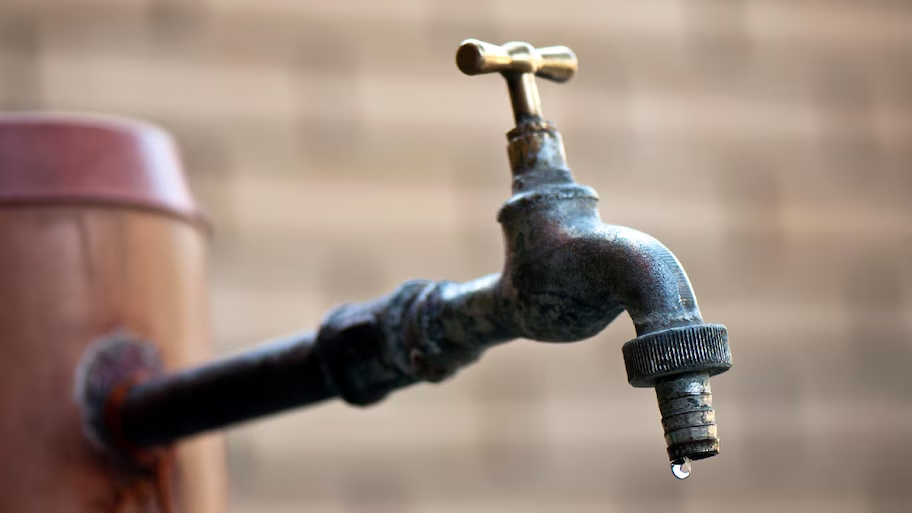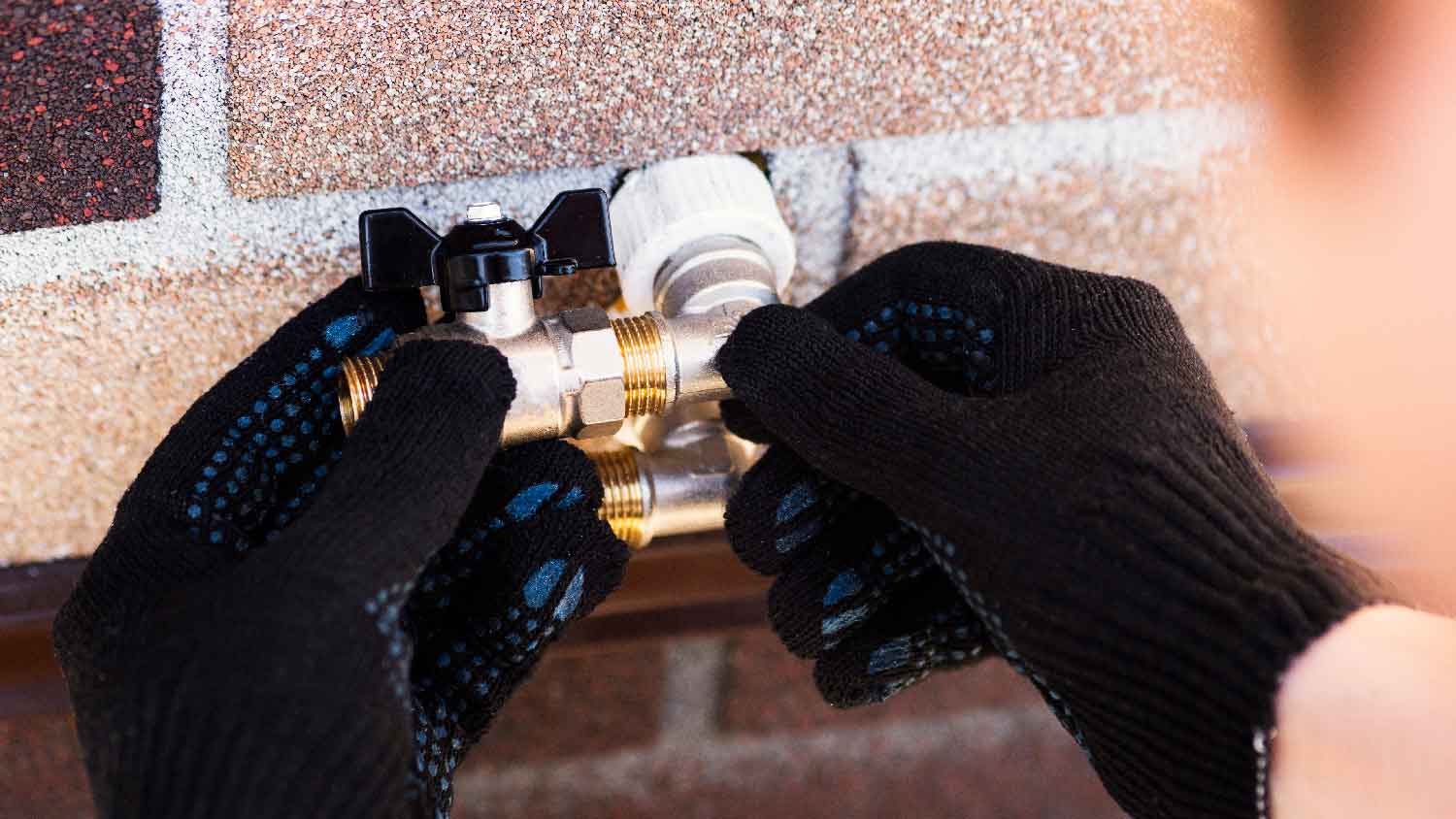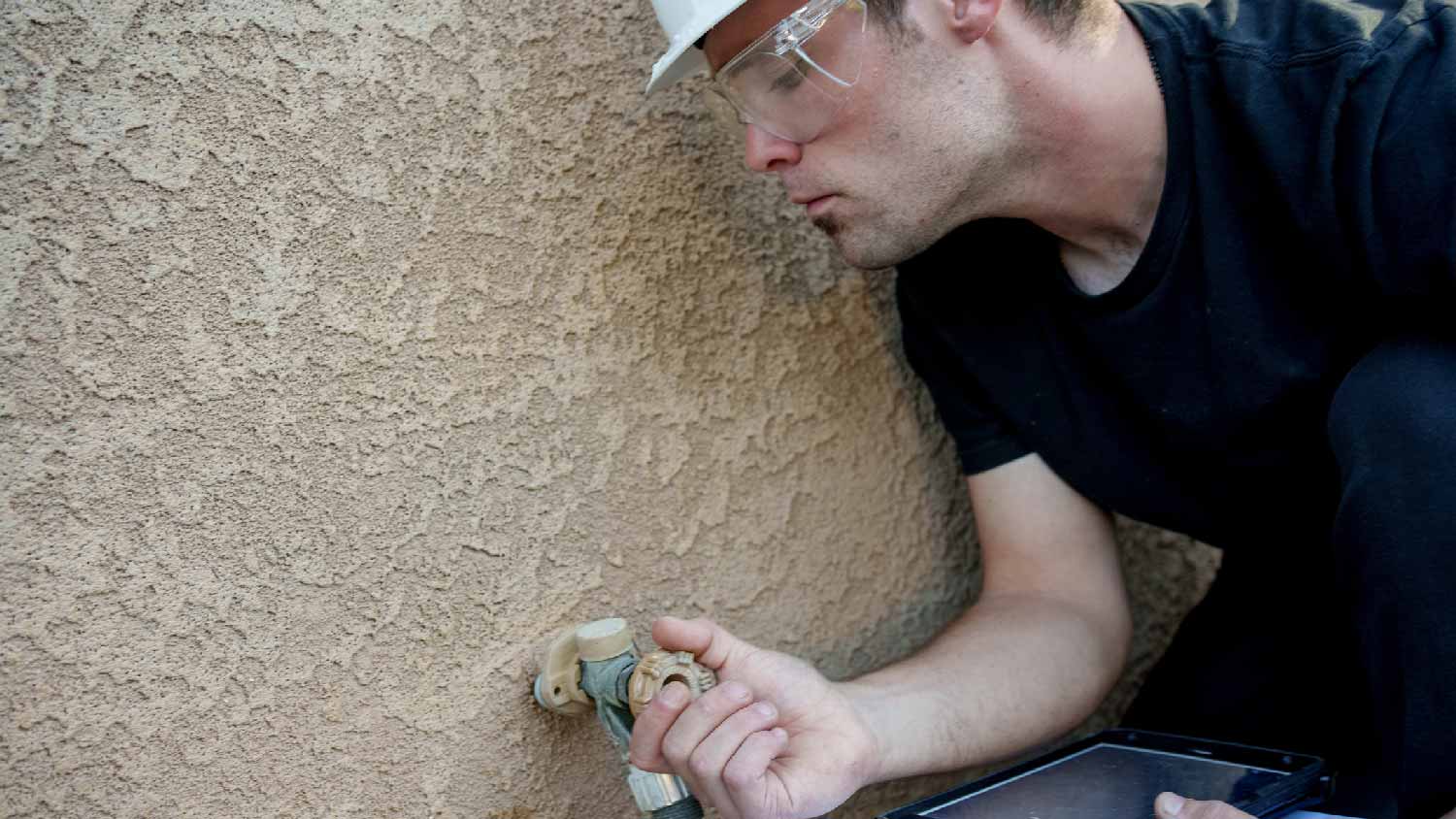Have an Outside Water Spigot With No Water Coming Out? Here Are 4 Likely Reasons Why
Make sapped spigots splash again


If the rest of your plumbing works, you might have accidentally tripped the outdoor shut-off valve.
Local water line work and neighbor renovations can disrupt your outdoor plumbing.
Clogs, leaks, and defrosting after winter can stop up a spigot.
Your spigot might have worn-out parts or need to be replaced entirely.
If all possible causes have been ruled out, you definitely need to call a local plumber.
A dry spigot can be an unpleasant surprise that torpedoes your afternoon plans of watering the plants. You might also be confused as to why it’s happening if the pipes have otherwise been fine. No one wants a huge plumbing bill in this economy, so there might be a simple mechanical solution. We'll walk you through possible causes of why your outdoor water spigot has no water coming out and what you can explore before calling the pros.
Possible Causes of Spigot Stoppage

Spigot problems are enough to make any avid gardener or lawn care enthusiast frustrated. Here are the top four things to look at as possible causes of water stoppage in your exterior faucet.
Leaky Water Line or Pipes
If the water line or pipework sprang a leak somewhere, water won’t be flowing out of the spigot like it should. Water line or pipe leaks can cause big problems if not addressed promptly. If you notice unusual pooling of water anywhere in your home, this is a dead giveaway. However, if the main water line is to blame rather than the pipes in your home, you might notice large puddles in your yard.
Valve Knocked Loose
If one of the valves connected to the pipe leading outside was turned when it shouldn’t have been, the rest of your plumbing may be fine while no water is coming out of the spigot outside. It could be just one valve on that pipe or a valve for an entire part of your home. If you or someone else forgot to turn it back during repairs, water will stop flowing through that pipe.
Local Water Line Interruptions
City water line ruptures and changes to local pipeworks can affect home plumbing in different ways. This could be a systemic problem that is out of your control until someone from the water department sorts it out. If a neighbor is doing plumbing work or renovations, it can also temporarily disrupt your water supply. It might affect your entire home or just the outdoor plumbing closer to their property.
Mechanical Failure
Most outdoor spigots are hose bibs, but some are sillcocks. Hose bibs are solely on the exterior of your home, while sillcocks extend into your home's interior via a long rod that connects it to the pipeworks.
Dislodged or worn-out parts in your hose bib or sillcock can make it impossible for water to come out. If you have a winter-proof sillcock, it might be clogged with ice or debris. They're prone to flow issues, making it a mechanical problem instead of a plumbing one.
What You Can Do

If you think you have an issue with your outside water spigot, here are some tips to diagnose the issue and get your systems back on track in no time.
Check Your Water Bills for Signs of Leaks
Not barring a recent plumbing emergency or shut-off, it might seem unorthodox to check your water bill first. But take a look at your most recent water bill and compare it to the bills from the past few months while you’re at it. Does it seem unusually high? Does it not line up with your household’s normal water use?
If either of those is a “yes,” there’s likely a leak somewhere or a clog causing water to back up. That’s why it isn’t coming out of the spigot and you’re being charged like those pipes stole your credit card and went to Vegas. Check the rest of your home for signs of plumbing trouble, like pools forming indoors that could practically fit a float.
Check the Valves
Have you had work done in your home recently, like washing machine repairs? If the rest of the plumbing in your home is in working order, but this outdoor spigot is not, there’s a chance that someone disabled the valve to the outdoor pipe connected to the spigot. It was probably by accident when seeking the correct valve for the repair job. Look for valves that may have been turned when they weren’t supposed to be. Try them and see if the spigot’s flow resumes.
Most modern homes have outdoor water shut-off valves, but yours may be indoors. It could’ve been inadvertently knocked if you or someone else needed to access those valves. The basement, crawlspace, or utility closet is most likely to house the outdoor shut-off valve. If your valve is outdoors, it should be outside on the side of your home that’s facing the street for easy access.
The shut-off might be tucked inside a utility box on the side of your home, but make sure that the valve is your outdoor shut-off valve and not the municipal street-level valve. There could be legal consequences for turning the wrong one.
Contact Your Local Water Department or Neighbor
After ruling out leaks and other plumbing problems related just to your home, check with your local water department to find out if the city, county, or other body is messing with the water lines on your block. They may have sent you a notice several months ago that was thrown out with all the junk mail, and you didn’t realize this would cause problems until just now.
If your neighbor is having work done on their home, ask them how long the renovations will go on for. If it’s affecting your outdoor plumbing for an extensive timeframe, you may need to speak to the professionals handling the job.
Remove the Spigot and Test It
To see if you’re having mechanical problems, remove the spigot and disassemble it. Try running the water for a few seconds to see if any comes out.
If there’s water gushing out, you have a mechanical problem with the spigot. The entire thing could be due for replacement, or there might just be a couple of broken washers that need to be swapped out. You’ll only know this by disassembling it and looking for broken, rusty, worn-out, or missing parts. Debris and other clogs in the spigot can also prevent water from coming out.
DIY vs. Hiring a Pro

If the problem isn’t caused by an external party, like your local water department or a neighbor having plumbing work done, it’s usually a leak, clog, or mechanical issue on your end.
If you’re not sure how a spigot’s inner workings should be laid out, a handyperson can remove, fix, and reattach your spigot for far less than a plumber. The cost for a local handyperson is $40 to $140 per hour, plus the cost of parts, and it’s a fairly short job. Even if you need a new hose bib or sillcock, it will cost less than calling a plumber.
However, if the spigot or sillcock is otherwise working fine but water still isn’t coming out, it’s time to call in the big guns. You definitely need to reach out to a local plumber if water lines are ruptured or if you don’t know where to find your shut-off valve and don’t want to risk a massive fine because you accidentally shut off the water for your entire block.
Plumbers know their way around complicated pipeworks and water lines, as well as how to cut and repair them. They know the local plumbing codes where you live, where to find all the right valves, and how to diagnose leaks that show up in sneakier ways than high water bills and random stoppages. They also have the proper licenses and bonding in case anything goes wrong, and this bonding is more specific than any insurance a handyperson might carry.
Plumbers usually charge by the hour, though small flat-rate plumbing jobs usually cost $100 to $400. This doesn’t include travel fees, parts, and weekend fees. If your plumbing issue turns out to be more complicated than water not coming out of an outdoor spigot, you’re looking at $80 to $200 an hour, or even more if you're in an area with a high cost of living.
If the problem isn’t caused by an external party, like your local water department or a neighbor having plumbing work done, it’s usually a leak, clog, or mechanical issue on your end.
If you’re not sure how a spigot’s inner workings should be laid out, a handyperson can remove, fix, and reattach your spigot for far less than a plumber. The cost for a local handyperson is $40 to $140 per hour, plus the cost of parts, and it’s a fairly short job. Even if you need a new hose bib or sillcock, it will cost less than calling a plumber.
However, if the spigot or sillcock is otherwise working fine but water still isn’t coming out, it’s time to call in the big guns. You definitely need to reach out to a local plumber if water lines are ruptured or if you don’t know where to find your shut-off valve and don’t want to risk a massive fine because you accidentally shut off the water for your entire block.
Plumbers know their way around complicated pipeworks and water lines, as well as how to cut and repair them. They know the local plumbing codes where you live, where to find all the right valves, and how to diagnose leaks that show up in sneakier ways than high water bills and random stoppages. They also have the proper licenses and bonding in case anything goes wrong, and this bonding is more specific than any insurance a handyperson might carry.
Plumbers usually charge by the hour, though small flat-rate plumbing jobs usually cost $100 to $400. This doesn’t include travel fees, parts, and weekend fees. If your plumbing issue turns out to be more complicated than water not coming out of an outdoor spigot, you’re looking at $80 to $200 an hour, or even more if you're in an area with a high cost of living.
Frequently Asked Questions
There are a multitude of causes for low water pressure in outdoor spigots. Normally, the water just gushes right out of them, but a soft trickle happens if the spigot itself is old or damaged. If parts are misplaced or worn down, the water pressure won't be as high as it should be. More complex causes include ruptured water lines and problems with the water meter.
Hoses can constrict over time. If water isn't coming out of your garden hose, it might be clogged by dirt, rocks, insect nests, and other debris that can find its way in there. If the weather's been cooler lately, water can freeze inside hoses and create clogs when it doesn't melt fast enough. If the water is hard where you live, minerals can build up in the hose and constrict it further.
This depends on how old your home is and residential construction norms where you live. Most modern homes have outdoor shut-off valves, but many older homes have the water meter indoors. You're most likely to find this valve in the basement or utility closet if it's indoors. If you have an outdoor shut-off valve, it should be somewhere on the perimeter of your home.





- Gas Plumbers
- Plumbing Repairs
- Sump Pump Installation
- Wood & Pellet Stove Repair
- Shower Repair
- Wood Stove Services
- Emergency Plumbers
- Fire Sprinkler Contractors
- Perc Test Companies
- Toilet Repair & Installation
- Boiler Repair
- Sewer Line Repair
- Faucet Repair
- Main Drain Camera Companies
- Foundation Drain Installation
- French Drains
- Bathtub Replacement
- Subcontractors
- Storm Drain Contractors
- Affordable Plumbing
- Plumbing & Heating Companies
- Bathroom Repair Services
- Sink Installation
- Commercial Plumber
- Barndominium Builders
- Water Line Repair
- Faucet Installation
- Water Line Installation
- Leak Detection
- Do You Need a Plumber to Replace Outdoor Spigots?
- How to Replace a Spigot Valve to Ensure It's Frost-Proof
- Outside Water Spigot Burst? Here’s What to Do
- 18 Common Plumbing Problems and How to Resolve Them
- Frozen Spigot? Here's How to Fix It to Prevent Major Damage
- 10 Most Common Plumbing Problems Every Homeowner Should Know
- No Water Coming Out of Your Faucets? Here’s Why and What to Do About It
- 14 Preventive Plumbing Maintenance Tips You Should Know
- How to Fix an Outdoor Faucet That Won’t Turn Off
- Hose Bib vs. Spigot: What’s the Difference Between These Outdoor Faucet Styles?










